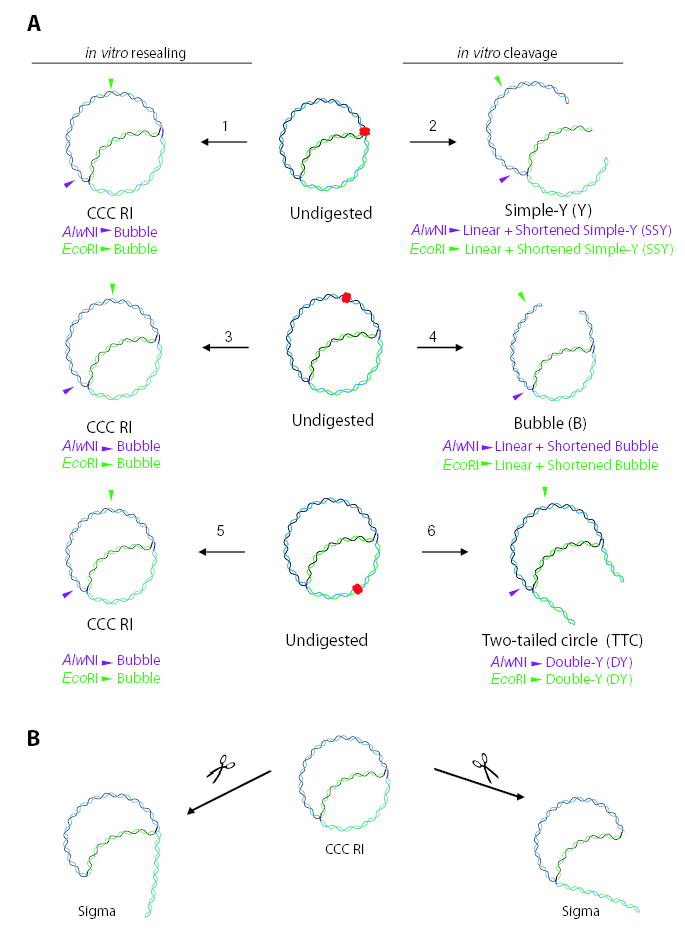Fig. 4.

DNA molecules resulting from in vitro resealing or cleavage lysis conditions after norfloxacin treatment (A) and DNA molecules resulting from breakage of sigma molecules in vivo (B). The partially replicated plasmid considered in this figure is stalled at the major gyrase binding site (centred at 990 bp). The gyrase cleavage complex is indicated by red overlapping ovals. Newly synthesized DNA strands are shown in green. The purple and green arrowheads indicate the AlwNI and EcoRI cut sites respectively.
A. Reactions that occur during in vitro lysis are as follows. Under resealing lysis conditions, a gyrase cleavage complex at a blocked fork would reseal the latent DNA break, resulting in an intact covalently closed circular replication intermediate (CCC RI) (arrow 1); treatment of this molecule with either AlwNI or EcoRI yields a bubble. Under cleavage conditions, the latent DNA break within the gyrase cleavage complex at a stalled fork is revealed, resulting in a simple-Y (Y) molecule (arrow 2); treatment of this molecule with either AlwNI or EcoRI yields a linear fragment plus a shortened simple-Y (SSY) molecule. If a gyrase cleavage complex exists well ahead of the replication fork, isolation under resealing conditions results in an intact CCC RI (arrow 3); treatment of this molecule with either AlwNI or EcoRI yields a bubble. In this case, isolation under cleavage conditions results in a bubble (B) (arrow 4); treatment of this molecule with either AlwNI or EcoRI yields a linear fragment plus a shortened bubble. If a gyrase cleavage complex is located behind the replication fork, isolation under resealing conditions results in an intact CCC RI (arrow 5); treatment of this molecule with either AlwNI or EcoRI yields a bubble. In this case, isolation under cleavage conditions produces a two-tailed circle (TTC) (arrow 6); treatment of this molecule with either AlwNI or EcoRI yields a double-Y (DY) molecule.
B. A CCC RI without a gyrase cleavage complex can be broken in vivo at the fixed branch (left side) or the replicating fork (right side).
